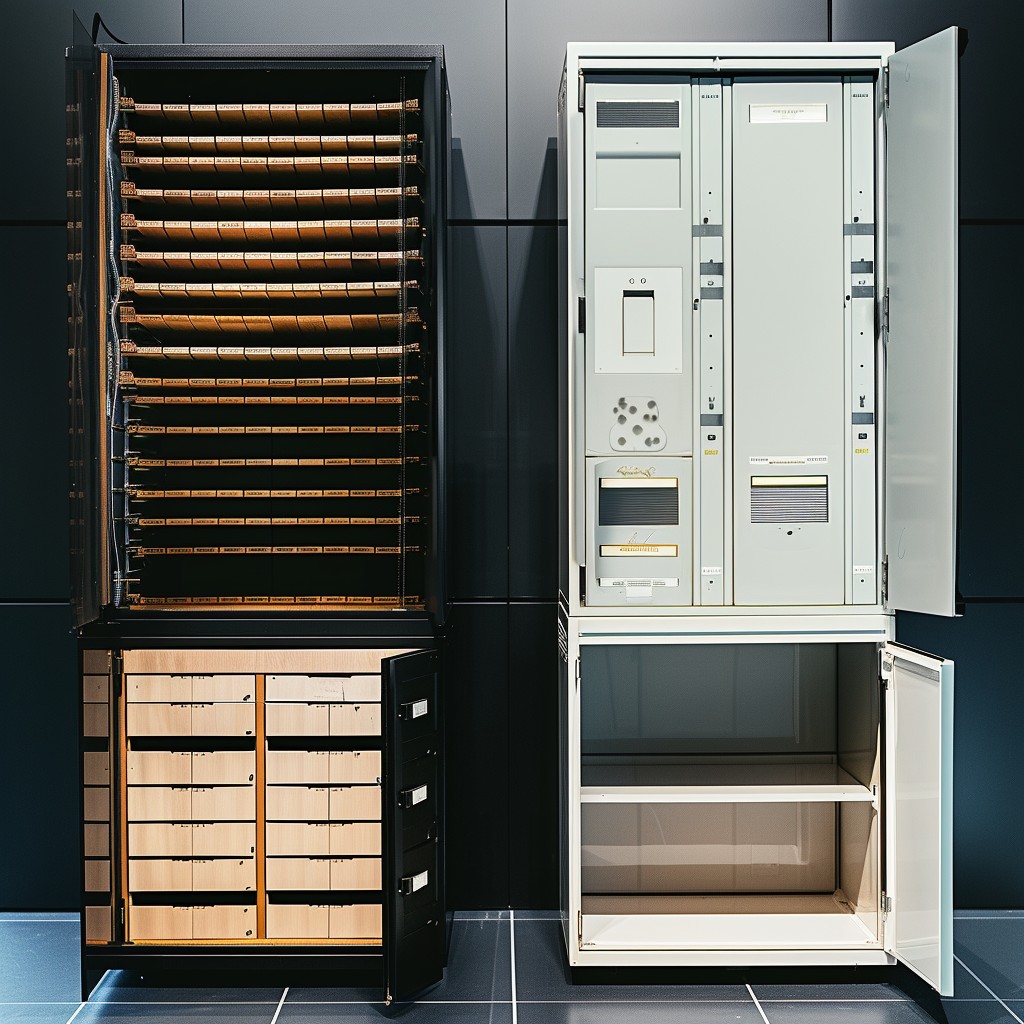Going digital for self storage businesses in 2025 has become a fundamental to begin with and without which businesses are falling flat or being overtaken by others. So the point is staying relevant is very important. We are going to show you why and how the digital transformation in the self-storage industry isn’t just about sprinkling in a few new tools or utilizing latest gadgetry —it’s about rethinking the entire operating model around how today’s customers would find, choose, access, and stay with you if you fully embraced the new schema for succeeding in the storage rental industry. So make sure to stick to the end to chew, swallow and digest this to the fullest.
Now, let’s get to the main topic. The macro picture in 2025 rewards the self storage operators who adopt lean, tech-enabled operations with a brand that sells outcomes, not square footage. DON’T GET OVERWHELMED just hear me out–By that I meant elevating convenience, transparency, and automated control while building systems that scale across locations, automate the low-value work, and extract insights from data to drive pricing and occupancy decisions.
Well, to put it this way– “The storage owners who would treat digital as their business backbone—not a side project—will own the next decade in this industry. “
HERE ARE SOME OF KEY POINTERS
Market Realities That Matter in 2025
There are so many marketing realities that matter the most these days, so basically what worked a decade ago seems centuries old now. As the demand mix and economics of the storage unit industry keeps shifting, your strategy should reflect it wholesomely. Like average rental prices have decreased roughly a quarter since 2023, and renters are increasingly optimizing for shorter stints even as average lengths of stay hover around the 20‑month mark—so the two major truths that create price pressure upfront and retention opportunity later: the broader market remains resilient, powered by smaller homes, evolving relocation patterns, and cost-of-living dynamics, with projections pointing to sustained industry growth through the decade. In more literal terms, this means fewer dollars per unit at move-in, more frequent promotions to keep occupancy tight, and smarter monetization of amenities that people are still willing to pay for—like climate control, better security, and 24/7 accessibility. That leads us to mobile first strategies.
The Local, Mobile-first Customer Journey
If you observe and look closely into recent trends you will find that self-storage is hyperlocal and increasingly mobile. Most renters won’t cross town for a unit; they would rather pick a nearby facility they can trust at a glance. The data shows as many renters contact the first store they find and more than half travel 15 minutes or less, so “found first, trusted immediately” is the new north star for acquisition. That makes your Google Business Profile, reviews, photos, and accurate inventory a frontline revenue engine. Pair that with the rise of “self storage near me” searches and the outsized impact of local listings, and it’s clear that local SEO and presence management aren’t optional chores—they’re core to occupancy.
It gives edge to the operators who master this funnel—fast site speed, clean UX, real unit availability, and clear pricing—convert the impulse to rent into an instant online move-in.
The Smart Facility Stack is Now The Baseline

Another great aspect of transforming your self storage unit management is going contactless. For instance the end-to-end workflows that customers don’t have to think about should be completely live such as online booking, digital leases, ID verification, automated billing, and app-based access etc. The smart storage units should also be layered in smart locks and integrated access control to connect payments with permissions, virtual unit tours to reduce on-site friction, and AI-assisted surveillance to deter issues before they become claims.
The multi-site operators should focus more on cloud dashboards to unify occupancy, rate management, and alerts so a lean team can manage a larger footprint without trading away service quality. In 2025, this smart stack that runs self storage units isn’t how you differentiate; it’s the threshold to be considered modern at all.
Automation, Data, and The New Economics of Conducting Self Storage Operations
One thing that all self storage operators would agree to is that the profit margins shake pretty much everything. They tighten when rates cool and promotions proliferate, which is why automation is the invisible engine of profitable storage in 2025. There are many things that we could do like automate follow-ups, dunning, delinquency workflows, and access toggles reduce manual labor and awkward conversations.
On the revenue side, intelligence matters more than instinct: for instance we can easily monitor the demand by unit type and season, adjust street rates dynamically, and time offers to likely upgraders or end-of-term churn risks. With amenities ranking among the few areas customers still pay a premium for—especially climate control and enhanced security—align pricing with perceived value, not just square footage. Facilities that operationalize these feedback loops earn more per available unit with fewer people and fewer mistakes.
Transparency-first Marketing Beats Feature Wars
The marketing playbook has changed in the self storage unit industry. For their own convenience the prospects are comparing you to larger, sophisticated brands in seconds, and legislation is trending toward stricter disclosure of fees and timelines for promotional rates.
So that all boils down to the reality check that this is a chance to use transparency as a competitive weapon: publish all mandatory fees (there should be no hidden charges), show the post-promo price in checkout, and make your renewal policies explicit outright.
Beyond compliance, positioning matters. Stop skirmishing over “more features–be yourself” and claim a bigger promise your operation can actually deliver—instant access, total visibility, and trustworthy protection—then prove it with live access logs, in-app climate readings, and same-day online move-ins.
In a saturated market like this, you don’t win by shouting louder about units; you win by making the experience feel obviously better and more honest. Next let’s talk about our strategy to stick to the principles.
Brand Strategy is The Whole Experience, Not The Logo
To score big and better brand strategy is pivotal in many ways–especially with all the recent changes happening in the digital world.
A strong storage brand is the sum of every interaction: the first impression on search, the look and feel of your site, the speed of online move-in, the reassurance of security updates, the tone of support, and of course clarity of your rates. Your mission, values, and consistency form the foundation, but flexibility matters too—markets shift, and your brand must evolve with them.
That too comes with tons of training so make sure to train your team (even if most of your operation is contactless) to embody the experience you promise, and turn satisfied tenants into public proof with reviews and referrals. Brand is what customers believe you will do for them when they are under pressure; everything you show and say should reinforce that belief.
Hyperlocal Presence & Community Gravity
The operators outperforming in 2025 think like neighborhood businesses with enterprise discipline. No matter even if they own a few self storage units or work for someone else. And they win big time too. They design hyperlocal campaigns, community sponsorships, highly curated “near me” content, and location-specific landing pages– all these things compound their visibility and trust.
They win obviously because Google’s local ecosystem disproportionately rewards relevance and proximity, and the time users spend on those pages signals quality back to search engines.
Also make sure to add interactive content like quizzes or guided unit finders to keep prospects engaged, while precise geotargeting and partnerships with local micro-influencers turn attention into action. This isn’t vanity—it’s a measurable way to increase your local share of demand and lower your blended cost per self storage rental.
Sustainability as a Major Demand Driver And Cost Lever
Sustainability has matured from message to mandate. As, these days, the customers increasingly prefer brands that manage energy responsibly, and the P&L supports the shift: LEDs, solar, and smart HVAC cut operating costs for climate-controlled units while giving you a tangible story to tell online. As convenience and sustainability rise together in customer priorities, showcasing green upgrades alongside your digital conveniences widens your appeal and can unlock incentives that improve project ROI.
Therefore, If you have already been modernizing access and monitoring, fold sustainability into the same narrative: smarter operations, smaller footprint, stronger trust.
A practical 90-day Blueprint to Start Strong
If you need a tangible starting point, focus on the moments that most affect conversion and retention.

First, perfect your Google Business Profile and review engine; this is the single biggest source of online discovery in storage, and the heartbeat of local trust.
Second, ensure your website is fast, mobile-first, and built for self-service—inventory visibility, real pricing, digital leases, and easy payments should be seamless from a phone in a parking lot.
Third, stand up integrated smart access and link it to billing so permissions update automatically.
Fourth, capture and act on data weekly: track inquiries, conversions, unit-type demand, and delinquency trends, and adjust rates and offers accordingly.
HERE IS MORE INSIGHTS INTO 90-DAYS-ROLL OUT
Days 0–30: Foundation and friction removal
Focus on the moments that create or destroy trust: discovery, booking, access, billing.
- Website and checkout: Replace inquiry flow with real‑time inventory, transparent pricing, e‑leases, and payments in a single, mobile‑first flow
- Access control integration: Link PMS to gate/unit permissions; payments drive access status automatically
- Smart locks pilot: Equip a 40‑unit pod (mixed sizes) with Bluetooth/smart locks; test in‑app entry and temporary codes for movers.
- Local presence cleanup: Fully optimize Google Business Profile (photos, services, hours, attributes), add UTM links, sync citations, and deploy location pages with schema
- Transparency reset: Publish all mandatory fees, promo terms, and renewal policies on pricing pages and in checkout.
- Review engine: Launch automated, timing‑based review asks post–move‑in and post–issue resolution; route unhappy feedback to support first (no gating).
Days 31–60: Automation and revenue discipline
Now that the path to rent is clean, make operations lighter and pricing smarter.
- Automated billing and dunning: Enable smart reminders (email/SMS), failed‑payment retries, and late‑fee logic; align with access rules
- Dynamic pricing by unit type: Set guardrails for street rates by demand, season, and competitor bands; weekly rate updates; promo budget with end dates. It will give you better RevPAR with disciplined discounts
- Commercial accounts play: Build a “Business Storage” flow with invoicing, multi‑user access, and reserved loading windows; outbound to movers, contractors, and micro‑e‑com
- Security uplift: Add AI-enabled cameras on ingress/egress, license plate capture, and event-based alerts to staff app; signage to reinforce deterrence
- Content that converts locally: Produce “near me” guides (move‑in checklist, unit size finder, neighborhood moving partners) and short video tours embedded on GBP and pages. More time-on-page, higher assisted conversions.
Days 61–90: Scale the experience and tell a bigger story
Turn operational gains into a category you can own locally.
- Smart lock expansion: Roll out to 50–60% of inventory based on pilot adoption and NPS; keep a budget tier for price‑sensitive renters
- App-lite tenant portal: Launch a branded, mobile‑first web app for access logs, temporary codes, climate readings (where applicable), payments, and support chat
- Offer architecture: Define three clear products:
i) Essential: Best price, keypad access
ii) Smart: App access, alerts, flexible sharing
iii) Secure+ Climate: Smart tier + climate + heightened monitoring.
- Brand and messaging refresh: Update signage, photos, and copy to sell outcomes—instant access, visible security, transparent pricing. Train staff on the narrative and micro‑scripts
- KPI cadence: Weekly operating review: occupancy by type, conversion, ADR/RevPAR, delinquency, review velocity, call drivers; adjust rates and promos accordingly.
Do these well, and broader programs—paid search, partnerships, and community activations—start working harder for you from day one.


